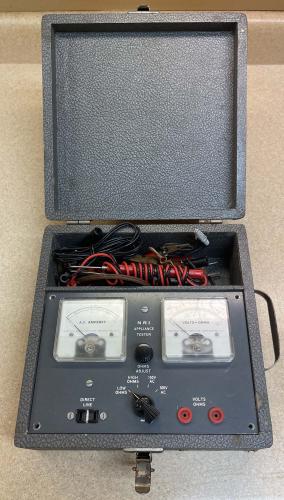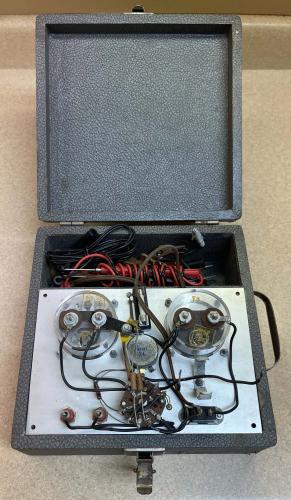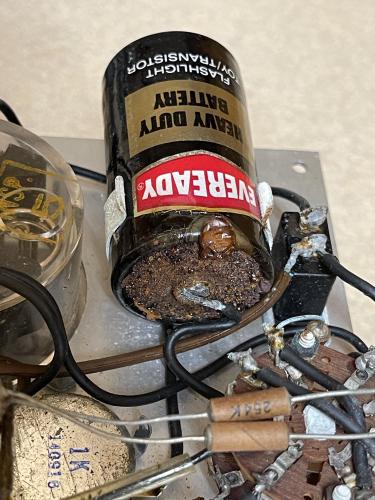- 2024
- Aug
- 22
The NRI (Conar 200) “Appliance Tester”
I’m not sure what fascinates me about these little test boxes - maybe it’s the attempt by the manufacturer to put as many functions into a small a space as they can. Regardless, this little test box is one of those devices. Yes, it’s a device that could be replaced by a simple digital multimeter and a couple of cables, but this was supposed to be an all-in-one device with all of the necessary connections to do the job at hand.
This device is a tester from NRI, or National Radio Institute - a former school by mail organization. This device was probably included, unassembled, as part of one of the courses. It’s state gave you a chance to learn assembly and soldering, as well as some circuit basics. It was later marketed on it’s own as the Conar 200, Conar being the consumer imprint of NRI where you could purchase NRI devices without the need for the coursework.
This device came from the 2024 Cuyahoga Falls Hamfest, and was $3. I didn’t really buy it for the test box itself, but more the real copper clips and probes that were in the storage compartment. The device itself was interesting enough (but smells horribly of basement!) that I decided to check it out a little.
At first glance, it appears to be a multimeter - and it is. It features a battery powered two-scale ohmmeter, a two-scale voltmeter, and a single scale ammeter. The volts and amps functions are simple metered measurements without any kind of filtering or scaling save that necessary to make it a high or low range. It has pin jacks for probing the device under test, and a socket so you can do direct amp measurements. That’s all.
It’s a very simple, unisolated device. The cordset is live when the probes are, and vice-versa.
The back of the device is fairly simple as well. A few resistors, a potentiometer, the meter connections, fuse, and some sockets are all you’ll find, along with the battery for the ohms function (removed in this image.) The wire is of fairly small gauge for 20A, so this isn’t something you’d want to run for a long period of time. It’s really about as simple as you can get, and is a pretty good meter for just having around and not worrying about batteries (for the most part.)
The battery in the device is a little odd, the kit required that you solder it in. There’s no battery holder save the spring clip. You’re absolutely right in thinking that you’re not supposed to solder on batteries, and that’s for multiple reasons. The two biggest reasons is the electrodes aren’t really meant to handle heat like that, and in newer batteries the electrolyte is wet(ter.) Heat could potentially cause it to burst or burn.
The battery in this one had leaked over the years, but fortunately for me it was a carbon cell. The electrolyte caused oxidation on the battery surface, but there’s no alkaline corrosion mess all over the place.
I’ll probably stick a battery in it at some point and see if it works. I can’t believe it doesn’t, there’s nothing there to not work!


